How To Dry Sourdough Starter For Long Term Storage – Fresh Milled Flour
I want to share with you how to dry out and save your fresh milled flour sourdough starter for longer term storage. This is one of the best ways to make a “backup” of your precious sourdough starter. So, let me share with you how simple this process really is.
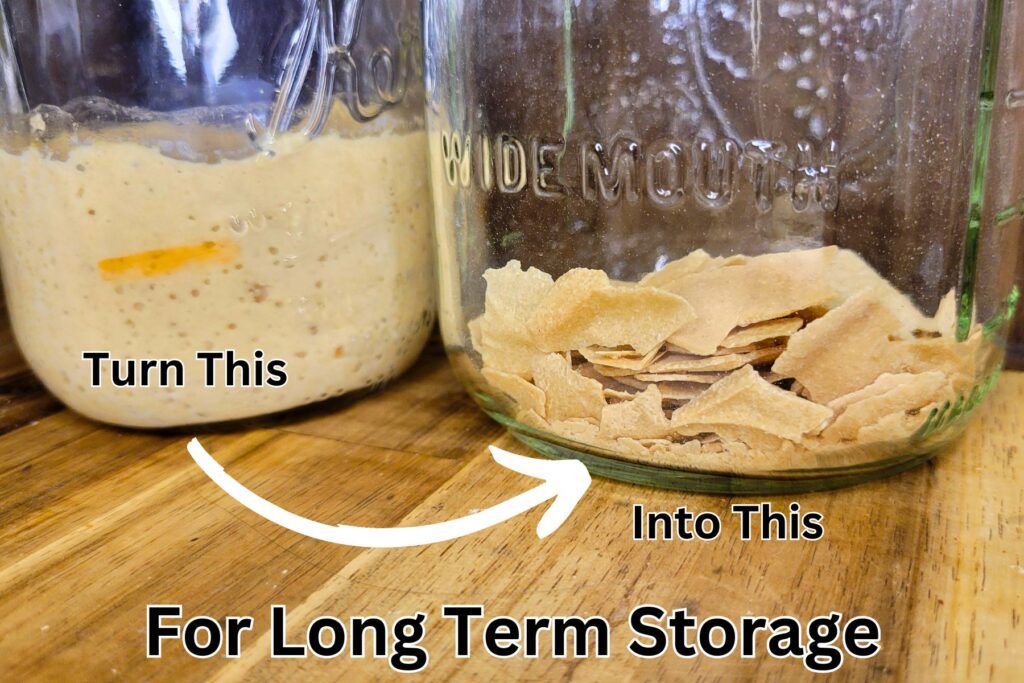
Why Should I Dry Out My Fresh Milled Flour Sourdough Starter?
You may be wondering why in the world would I want to dry out my sourdough starter? Well, the answer is simple. This method will allow you to have a back up of your sourdough starter if anything ever happens to it. This also allows for longer term storage with less “babysitting.”
You worked so hard to get your sourdough starter nice and strong, and you don’t want to ever have to start over from scratch again. (Ask me how I know! LOL) So, let me show you how.

How To Ruin A Fresh Milled Flour Sourdough Starter
This may sound like a silly heading, but let me tell you, I have heard of some crazy stories about how a sourdough starter was ruined. Don’t be intimidated by sourdough, because as long as you follow the simple care instructions, none of these should ever happen to you. BUT, if it does, you will be prepared, because sitting quietly in your freezer is an amazing little living replacement.
Here Are Some Ways To Ruin Your Fresh Milled Flour Sourdough Starter
- Neglecting Regular Feedings:
- Forgetting to feed your starter for an extended period can starve the yeast and bacteria, leading to an inactive or dead starter.
- Accidental Contamination:
- Introducing soap, oil, or other contaminants through utensils or containers can disrupt the microbial balance.
- Using softened water, chlorinated water, or contaminated water.
- Storing in an Airtight Container:
- A completely sealed container can restrict airflow, leading to an anaerobic environment that can kill the starter or cause it to develop off-flavors and spoil.
- Cross-Contamination:
- Mixing utensils or containers with other ferments or food can introduce unwanted microbes that can outcompete or kill the sourdough culture.
- Accidents:
- If you have young children, or pets, I have heard of stories of them dropping, or contaminating a starter.
- Dropping and breaking the jar that is in.
- Someone else feeding it incorrectly or with the wrong thing.
- Storing it in the oven or microwave, then someone else unknowingly turns it on, and kills it.
- Placing your starter in direct sunlight can heat up the starter and harm the microbial community.
By being aware of these potential accidents, you can take steps to avoid them and keep your sourdough starter healthy and active. Let me know in the comments below if you have a story about how you killed your sourdough starter!
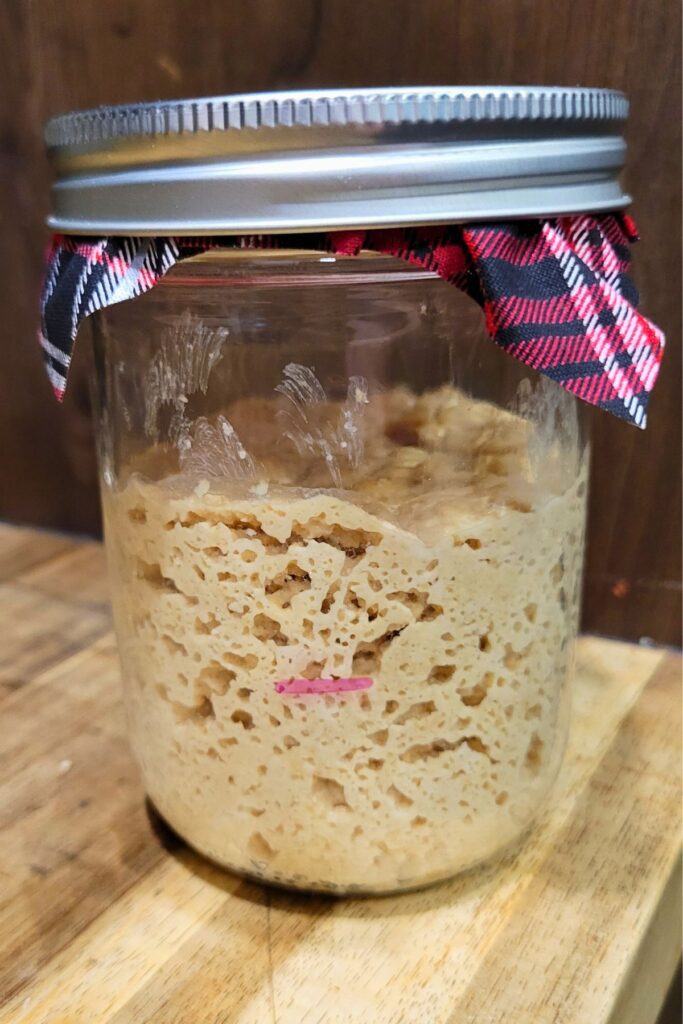
How To Make Your Own Sourdough Starter From Scratch With Fresh Milled Flour?
If you already had one of these unfortunate events happen to you and you need to start all over again from scratch, I have some help for you! HERE is my blog post how to make your very own sourdough starter. OR if you have never made a sourdough starter before, and would like to I have a whole tutorial video with the steps, troubleshooting common problems, and I make one along side with you. You can watch that video HERE.

How To Dry Your Fresh Milled Flour Sourdough Starter
- Firstly, make sure your sourdough starter is nice and strong before drying it out. You need to make sure it is strong enough to sustain the process. I recommend a starter that has been consistently doubling for at least a month before trying this.
- I recommend to feed your starter about 3-5 hours before this, so that is is strong and at it’s peak.
- Line a baking sheet with parchment paper.
- Then spread a very thin layer of your sourdough starter evenly on the parchment paper (Less than 1/8 inch thick.) If it is too thick, or uneven it won’t dry all the way through. So, the thinner you spread it out the faster it will dry completely.
- Place the baking sheet uncovered in a dry area at room temperature, but away from sunlight, heat, pets, and children. Try to keep away from humid areas, as this will add moisture back into your starter.
- Let the sourdough starter dry completely. This can take anywhere from 24 to 48 hours. If it takes longer than that, start over, it was either too humid, or too thick.
- Once it is completely dry it should be brittle, and have o soft or sticky spots left.
- With clean dry hands, break the sourdough starter into small pieces or flakes.
- Then, put them into airtight containers or bags. You can keep this at room temperature (out of direct sunlight, and keep humidity out.) BUT, I like to keep it in the freezer for even longer term storage.
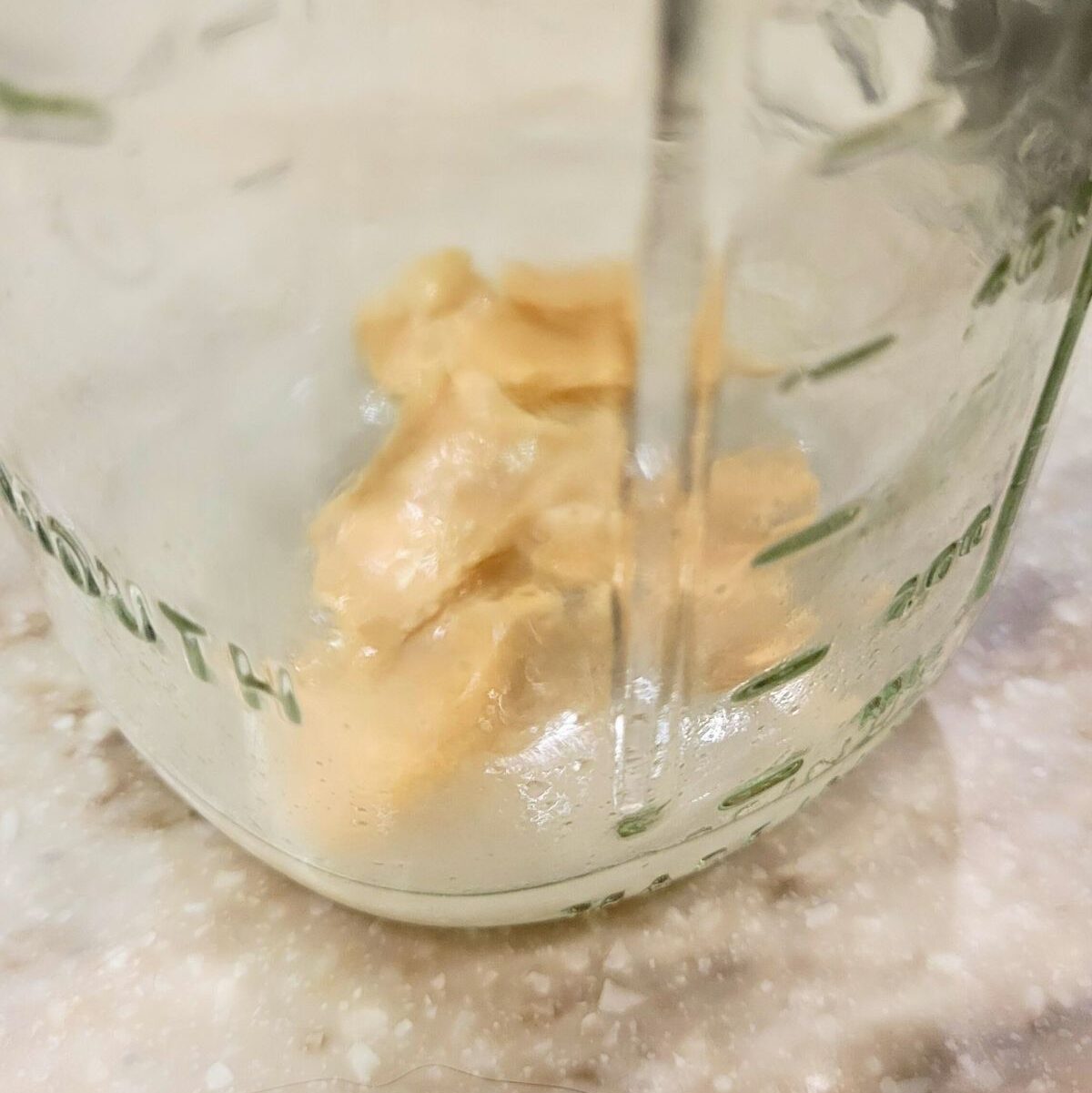
Rehydrating Your Dried Sourdough Starter
- To rehydrate and activate your dried sourdough starter, use about 1 TBSP dried sourdough starter, and put it in a clean dry jar.
- Add 1 TBSP room temperature filtered water (Not chlorinated or softened) to the jar to rehydrate the starter. Then, let it sit for 2-4 hours to soften.
- Once the starter has softened, then you can feed as normal. So, equal parts starter, flour, and water. (Ex. 50g starter, 50g water, 50g fresh milled flour.)
- Stir this together with a clean utensil, and let it sit for 24 hours.
- Continue feeding the starter twice a day (and discarding) with equal parts starter, flour and water. Within a few days, the starter should become active and bubbly again, ready for use in baking.
- By following these steps, you can effectively dry out and store your sourdough starter for future use, ensuring you always have a backup on hand.
How Long Can I Store Dried Sourdough Starter Made With Fresh Milled Flour?
When dried completely, and then stored properly, a sourdough starter can last indefinitely at room temperature. But, freezing can give you extra piece of mind. So, here are some things to consider when thinking about long term storage. In the video linked below, I show all the steps involved, and talk about the differences between reactivating frozen vs room temperature dried fresh milled flour sourdough starter.
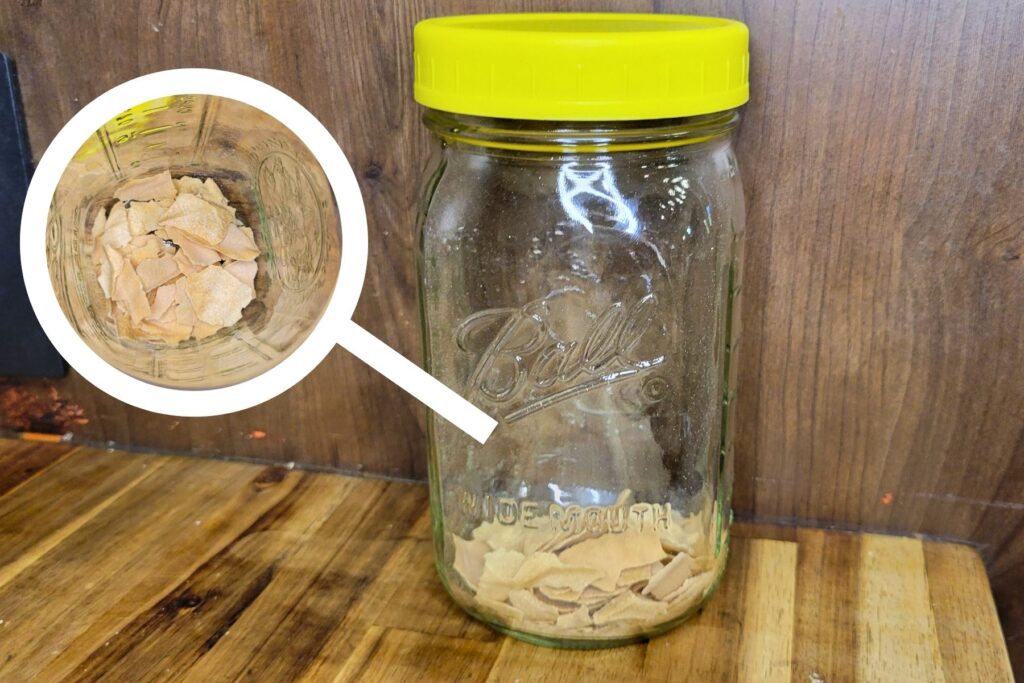
Proper Storage Is Very Important
- Airtight Container:
- Store the dried starter in an airtight container to protect it from moisture and air, which can ruin your dried starter.
- Cool, Dry Place:
- Keep the container in a cool, dry place away from direct sunlight, children, pets, and heat sources. A dark pantry or a cupboard is ideal.
Some Factors That Can Affect Your Sourdough Starter Storage
- Moisture:
- Moisture is the primary enemy of dried sourdough starter. If it gets damp, it can develop mold or other spoilage organisms. You could place a food safe moisture absorber in the jar to help keep moisture at bay. HERE are some that I have used before.
- Temperature Fluctuations:
- While room temperature is generally fine, significant fluctuations in temperature can potentially degrade the starter over time. Keeping it in a consistently cool environment is beneficial. This is why I love using the freezer for this.
Check For Signs of Spoilage
Even though it can last a long time, it is a good idea to check your dried starter every few months to ensure it’s still dry and free from mold. Make sure to check for bad odors or visible signs of mold.
Shop This Post
Grain Mill Nutrimill (Use Coupon Code: Grainy for $20 Off yours)
Mason Jar Lids – Wide Mouth
Check Out Some Of My Other Fresh Milled Flour Sourdough Posts & Recipes
How To Make A Sourdough Starter From Scratch With Fresh Milled Flour
Sourdough Hamburger & Hot Dog Buns
Blueberry Sourdough Boule (Inclusions)
The Best Sourdough Chocolate Chip Cookies EVER!
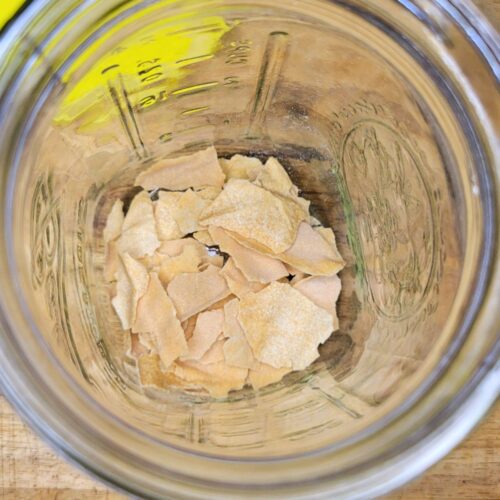
How To Dry Your Fresh Milled Flour Sourdough Starter for Long Term Storage
Ingredients
- 1/4 cup Mature and very active sourdough starter 50g
Instructions
Drying Out The Sourdough Starter
- Firstly, make sure your sourdough starter is nice and strong before drying it out. You need to make sure it is strong enough to sustain the process. I recommend a starter that has been consistently doubling for at least a month before trying this.
- I recommend to feed your starter about 3-5 hours before this, so that is is strong and at it’s peak.
- Line a baking sheet with parchment paper.
- Then spread a very thin layer of your sourdough starter evenly on the parchment paper (Less than 1/8 inch thick.) If it is too thick, or uneven it won’t dry all the way through. So, the thinner you spread it out the faster it will dry completely.
- Place the baking sheet uncovered in a dry area at room temperature, but away from sunlight, heat, pets, and children. Try to keep away from humid areas, as this will add moisture back into your starter.
- Let the sourdough starter dry completely. This can take anywhere from 24 to 48 hours. If it takes longer than that, start over, it was either too humid, or too thick.
- Once it is completely dry it should be brittle, and have o soft or sticky spots left.
- With clean dry hands, break the sourdough starter into small pieces or flakes.
- Then, put them into airtight containers or bags. You can keep this at room temperature (out of direct sunlight, and keep humidity out.) BUT, I like to keep it in the freezer for even longer term storage.
Rehydrating (Reactivating) The Dried Sourdough Starter
- To rehydrate and activate your dried sourdough starter, use about 1 TBSP dried sourdough starter, and put it in a clean dry jar.
- Add 1 TBSP room temperature filtered water (Not chlorinated or softened) to the jar to rehydrate the starter. Then, let it sit for 2-4 hours to soften.
- Once the starter has softened, then you can feed as normal. So, equal parts starter, flour, and water. (Ex. 50g starter, 50g water, 50g fresh milled flour.)
- Stir this together with a clean utensil, and let it sit for 24 hours.
- Continue feeding the starter twice a day (and discarding) with equal parts starter, flour and water. Within a few days, the starter should become active and bubbly again, ready for use in baking.
- By following these steps, you can effectively dry out and store your sourdough starter for future use, ensuring you always have a backup on hand.
Video
Notes
*This post contains affiliate links, which means I make a small commission at no extra cost to you! Also, as an Amazon Associate I earn from qualifying purchases. But, I will only suggest items I actually Recommend!

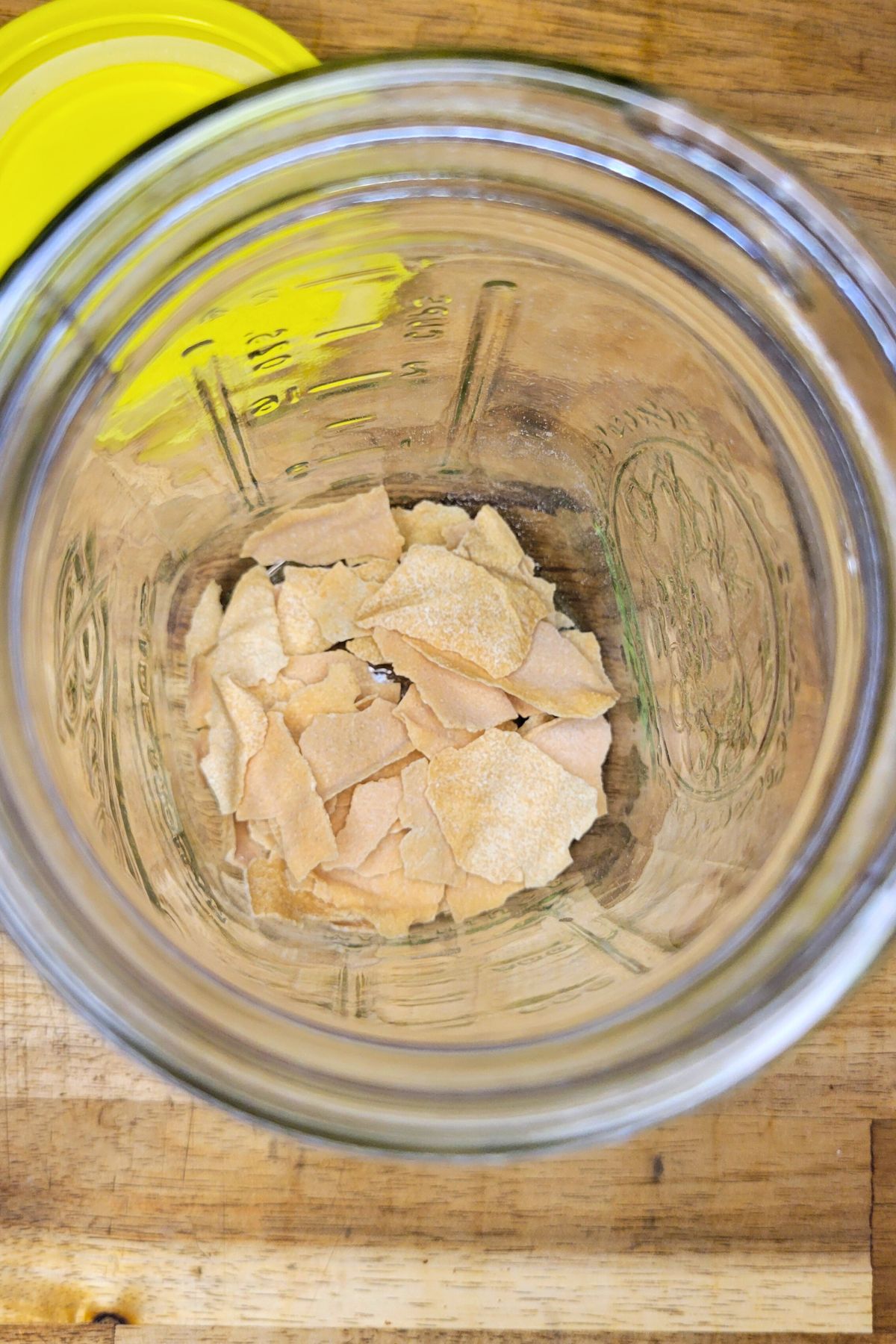



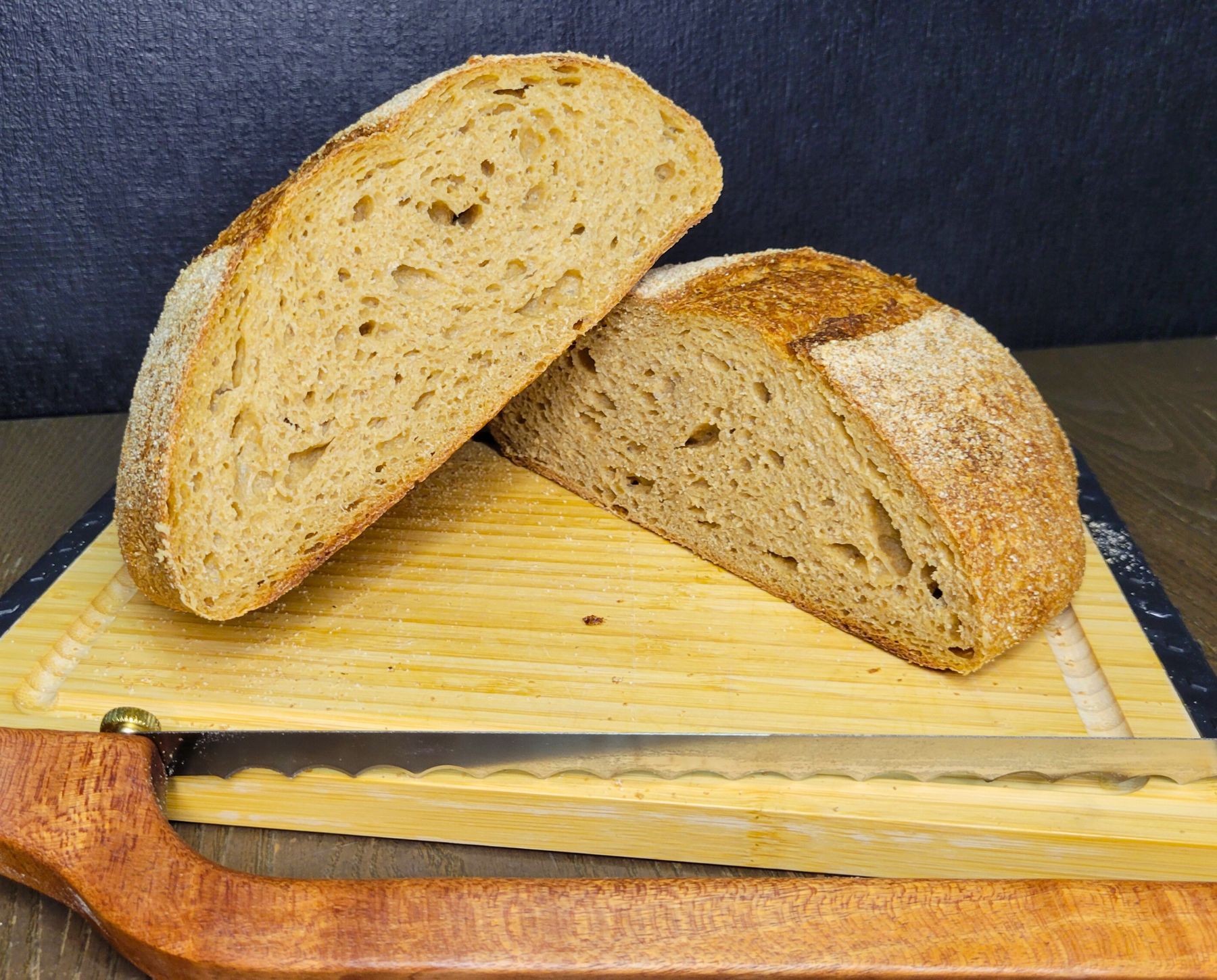

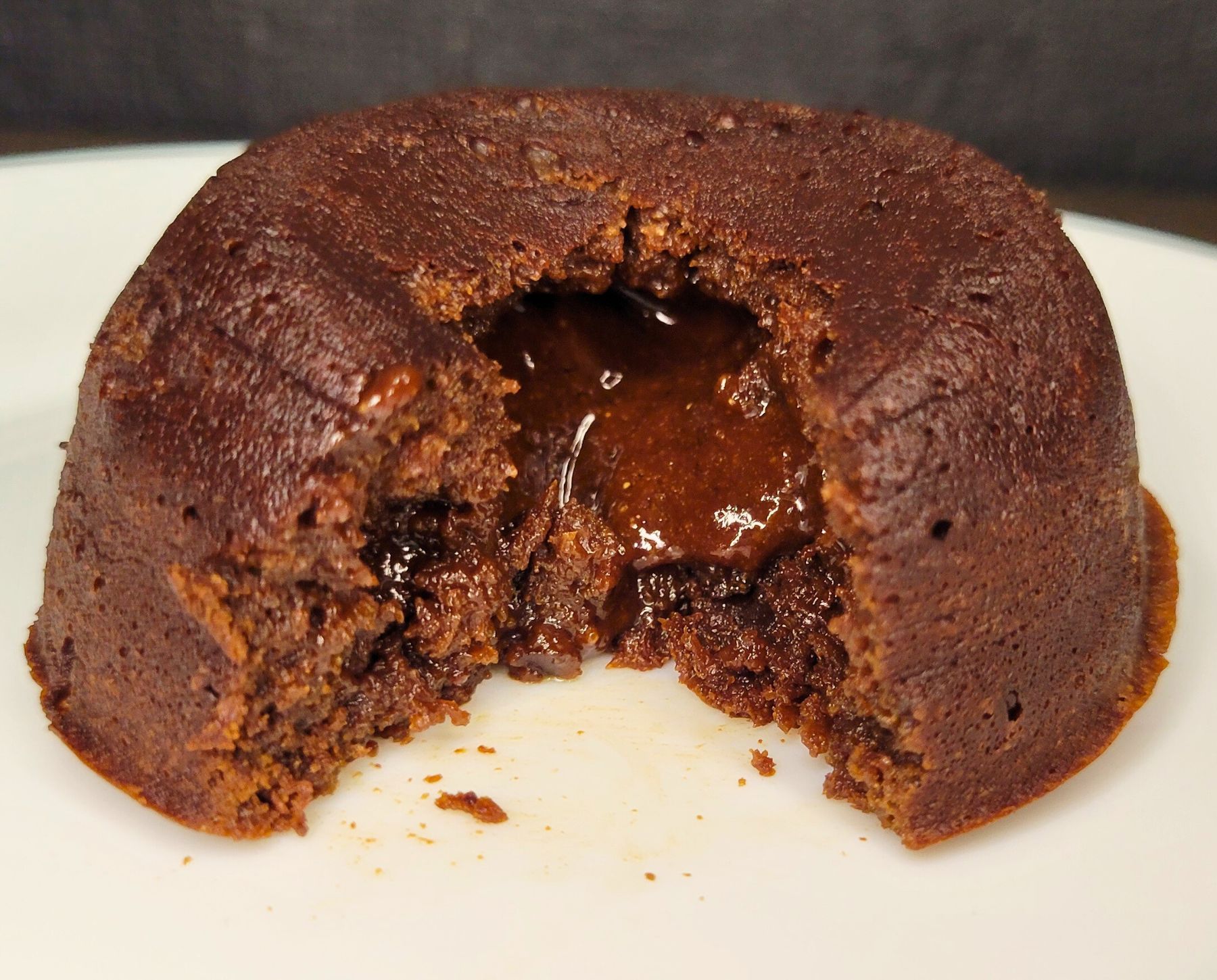

Hi kara, I was wondering if I could cover the sourdough so gnats and flies don’t get in it while it’s drying? It’s gnat season at my house and those things get into everything it seems lol. Thank you!
You could cover it with something breathable like cotton so that it won’t hold the moisture in.
Hi! We have a freeze dryer, would this be a good option to dry it out?
I have not tried that method, but I think it should work. Let me know how it goes if you give it a try. 🙂
Would using a dehydrator on the lowest temp setting work to dry it out? Then for storage vacuum sealing and freezing?